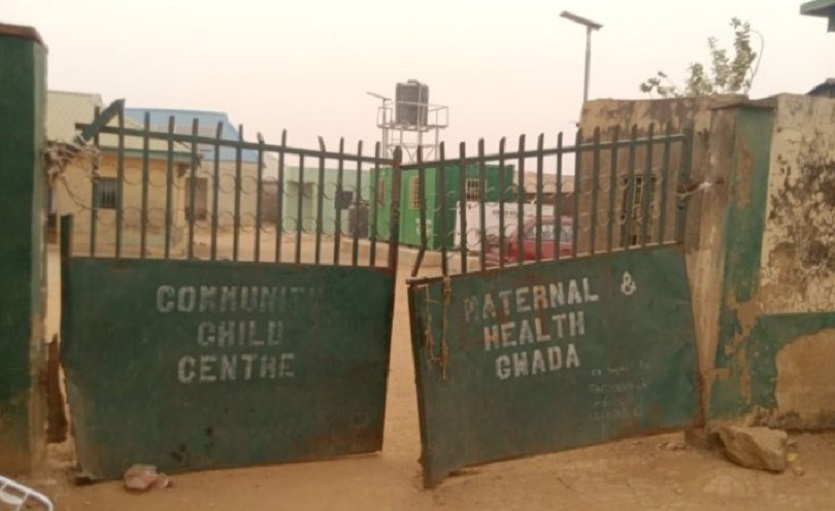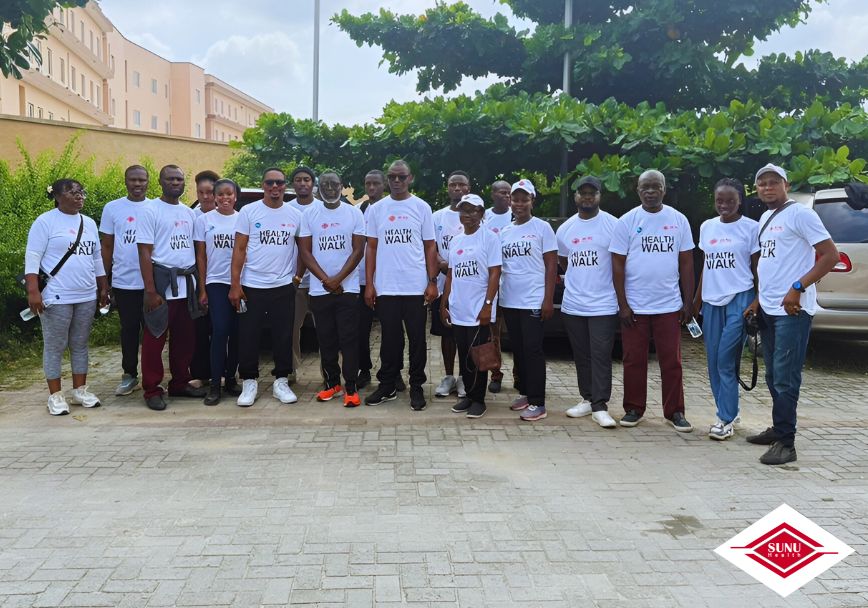Health
Nigeria’s Health Indicators Among Worst in Africa—Report

By Aduragbemi Omiyale
A new report by ONE Campaign has revealed that the health sector in Nigeria is woeful, with key indicators showing that urgent steps are needed to put things in order.
For example, the report noted that despite the realities of the COVID-19 pandemic, Nigeria’s health budget as a percentage of the total budget is declining, with 13 states reducing their fiscal allocations to the health sector.
It was observed that only two states (Kaduna and Sokoto) consistently met the 15 per cent health allocation target between 2020 and 2022, while public health allocations per person have fallen from $10.8 per person in 2020 to $8.5 per person in 2022.
In 2020, while the globe was battling with COVID-19, the Secretary to the Government of the Federation (SGF), Mr Boss Mustapha, confessed that the nation’s health system was in comatose.
However, the federal and several state governments have continued to fail to fund the sector, resulting in several medical doctors seeking greener pastures abroad, especially in the United Kingdom.
In the report titled Post-Pandemic Health Financing by State Governments in Nigeria 2020 to 2022, One Campaign noted that the proportion of total budgets allocated to health by most state governments is on a downward trend, reflecting the quality of healthcare delivery in the country.
In 2001, the heads of state of African Union countries met in Abuja and pledged to devote at least 15 per cent of their annual budgets to improving the health sector. But two decades after the Abuja Declaration, Nigeria still struggles to meet this goal.
The COVID-19 pandemic also revealed the challenges in Nigeria’s healthcare system, with stakeholders and many Nigerians hoping it would be the game-changer that finally motivates governments at all levels to prioritize healthcare, commit more funds to revitalize the sector, drive improved health outcomes and protect the masses from future health emergencies.
The report’s findings, however, show a deviation from this expectation, with more than 10 state governments in Nigeria reducing their fiscal allocations to healthcare since the pandemic hit in 2020, putting a strain on an already-stressed sector.
“Nigeria’s health indicators are reportedly some of the worst in Africa. COVID-19 has exposed additional gaps in the country’s healthcare system and has shown why the sector requires ambitious strategies and adequate funding in order to serve the masses, particularly the poor and most vulnerable in the society,” Nigeria Country Director at The ONE Campaign, Mr Stanley Achonu, said.
“It is, therefore, extremely worrisome that some state governments are slashing their annual allocations to health when they should be striving to meet the Abuja Declaration’s 15 per cent funding benchmark.
“As the 2023 budget season approaches, governments at all levels must prioritize health care and allocate a significant portion of their budget to improving healthcare delivery. Adequate disbursements should follow these allocations to finance health infrastructure and programs,” Mr Achonu added.
The report has urged governments to demonstrate strong political will and commitment to the Abuja Declaration by allocating at least 15 per cent of their total budget to health.
In addition, it stressed that governments must commit to evidence-based programming, ensure effective stakeholder participation in budgeting processes, invest in primary health care centres, and complement adequate funding with sufficient health workers and effective health system governance.
Business Post reports that the One Campaign report is a follow-up on the State of Primary Healthcare Service Delivery in Nigeria released in July to track state governments’ performance in implementing the Basic Health Care Provision Fund (BHCPF).
It provides an in-depth analysis of sub-national and federal government health expenditure trends, revealing that while the combined budgetary allocations of all 36 states increased by 12.8 per cent between 2020 and 2022, in real terms, the health sector received less funding in 2022 than in 2020 when adjusted for inflation.
Health
SUNU Health Named Most Customer Focused HMO of the Year

By Modupe Gbadeyanka
The decision of the management of SUNU Health Nigeria Limited to adopt the strategy of placing the enrollee and customer at the heart of its operations has started to pay off.
The company was recently announced as Most Customer-Focused Health Insurance Company of the Year at the Customer Service Standard Magazine Awards 2025.
The recognition underscored the company’s success in translating its dedication into tangible enrollee satisfaction and superior market service at the Nigerian Health Maintenance Organisation (HMO) landscape.
It also highlights the organisation’s dedicated efforts in streamlining claims processing, enhancing access to quality healthcare providers, and maintaining transparent, responsive communication channels with its diverse client base across Nigeria.
The accolade further serves as a powerful testament to the successful integration of digital solutions and human-centric service models at SUNU Health.
It positions the firm as a leader not only in providing robust health plans but also in delivering the supportive, personalized care that enrollees truly value.
“Clinching the Most Customer-Focused Health Insurance Company of the Year award is not just an honour; it is a validation of the core philosophy that drives every member of the SUNU Health team.
“We believe that healthcare is fundamentally a service industry, and our success is measured by the well-being and satisfaction of our enrollees,” the chief executive of SUNU Health, Mr Patrick Korie, commented.
“This award reinforces our resolve to continuously innovate and set new benchmarks for customer experience in the Nigerian health insurance sector.
“Our commitment to providing accessible, high-quality, and seamless healthcare solutions remains our top priority as we move into the new year (2026),” he added.
Health
Nigeria Launches First National Antimicrobial Resistance Survey

By Adedapo Adesanya
Nigeria has launched its first nationally representative survey on antimicrobial resistance to generate critical data to guide evidence-based policies, improve patient outcomes, and strengthen health system resilience.
Antimicrobial resistance occurs when bacteria, viruses, fungi, and parasites evolve to resist treatment, making infections harder to cure.
As a result, surveillance is essential to track resistance patterns, identify priority pathogens, and guide targeted interventions and with support from the World Health Organization (WHO) and other partners, the initiative marks a milestone in the country’s public health response.
Nigeria becomes the third country globally to partner with WHO on a national antimicrobial resistance survey. having been selected based on the country’s strong commitment to AMR surveillance, its updated WHO Nigeria NAP 2.0, and readiness to expand laboratory and data systems.
Africa’s most populous country ranks 20th globally for age-standardized mortality due to antimicrobial resistance . In 2019, an estimated 263,400 deaths in Nigeria were linked to it—more than the combined deaths from enteric infections, tuberculosis, respiratory infections, maternal and neonatal disorders, neglected tropical diseases, malaria, and cardiovascular diseases.
Globally, resistant infections in tertiary care settings cost between $2,371 and $29,289 per patient episode, extend hospital stays by an average of 7.4 days, and increase mortality risk by 84 per cent.
The survey will see the establishment of a national baseline on antimicrobial resistance prevalence to monitor interventions, assess the distribution, burden (morbidity, mortality, DALYs, cost), and diversity of AMR across regions and populations, as well as contribute to the global target of reducing AMR deaths by 10 per cent by 2030, in line with the political declaration endorsed at the 79th United Nations General Assembly in 2024.
It also seeks to strengthen routine antimicrobial resistance surveillance, including diagnostics, sample referral systems, and laboratory capacity.
Using WHO’s standardized methodology, the survey will run for 12–15 months and cover 40–45 randomly selected health facilities nationwide. Patients with suspected bloodstream infections (BSIs) will be identified using standard case definitions, and blood samples will be analysed in quality-assured laboratories.
Data will be collected across all age groups, covering clinical, demographic, laboratory, financial, and outcome indicators. Follow-up will occur at discharge, 28 days, and three months post-infection. The survey will sample approximately 35,000 patients suspected of BSIs to obtain around 800 isolates of the most common pathogens.
Dr Tochi Okwor, Acting Head, Disease Prevention and Health Promotion, Nigeria Centre for Disease Control and Prevention (NCDC) said, “With WHO’s support, we are confident the survey will generate the evidence needed to protect public health.”
WHO Representative in Nigeria, Dr Pavel Ursu, reaffirmed WHO’s commitment stating that ,“Nigeria is taking a decisive step toward combating AMR with an approach grounded in data, science, and measurable impact. This survey will provide the clarity needed to drive smarter policies, stronger surveillance, and better patient outcomes. Nigeria is laying the foundations for a resilient health system, one that protects lives, strengthens trust, and ensures that essential medicines remain effective for future generations.”
Adding her input, Dr Laetitia Gahimbare, Technical Officer at WHO Regional Office for Africa, added:“Strengthening surveillance enhances Nigeria’s capacity to detect and respond to AMR threats, supporting better patient outcomes, reinforcing health security, and building a resilient system.”
Professor Babatunde Ogunbosi, Paediatric Infectious Diseases Specialist at University College Hospital, Ibadan, highlighted the broader impact:, “This survey is about more than data. It’s about building national capacity for research, diagnostics, and policy. It integrates science into public health decision-making.”
Health
Our Vision Extends Beyond Offering Health Insurance Packages—SUNU Health

By Modupe Gbadeyanka
One of the leading Health Maintenance Organisations (HMOs) in Nigeria, SUNU Health, has said its philosophy is proactive wellness, noting that this was why it recently partnered with The Divine Physician and St. Luke Catholic Chaplaincy Centre for a community health initiative.
The chief executive of the company, Dr Patrick Korie, said, “SUNU Health’s vision extends far beyond merely offering health packages and insurance.”
“We are fundamentally interested in proactive wellness—preventing illness rather than just treating it. This annual exercise is a crucial part of that commitment, and we will continue to champion it for as long as we exist,” he stressed.
The medical practitioner led the company’s annual Health Walk in Lagos on Saturday, November 8, 2025. The event drew hundreds of health enthusiasts, including the Chaplain of the centre, Rev Fr. John Okoria SJ.
His active participation reinforced the spiritual and moral commitment to holistic well-being, proving crucial in mobilizing staff and community members, thereby ensuring the vital wellness message reached a broad and deeply engaged audience.
The health walk covered several major streets in Lagos, starting from Ishaga Road and navigating through Itire Road, Randle Avenue, Akerele, Ogunlana Drive, and Workers Street before concluding back at the starting point. Following the vigorous walk, participants engaged in a session of high-energy aerobics and other outdoor exercises, reinforcing the day’s focus on fitness.
“We are delighted to champion this vital health initiative alongside the Catholic Chaplaincy Centre LUTH/CMUL. The turnout was truly delightful, reflecting the community’s deep desire to embrace wellness.
“Collaborations like this amplify our message and commitment to the Nigerian community,” the Brand and Corporate Communications Lead at SUNU Health, Mr Samuel Olayemi, stated.
-

 Feature/OPED6 years ago
Feature/OPED6 years agoDavos was Different this year
-
Travel/Tourism9 years ago
Lagos Seals Western Lodge Hotel In Ikorodu
-

 Showbiz3 years ago
Showbiz3 years agoEstranged Lover Releases Videos of Empress Njamah Bathing
-

 Banking8 years ago
Banking8 years agoSort Codes of GTBank Branches in Nigeria
-

 Economy3 years ago
Economy3 years agoSubsidy Removal: CNG at N130 Per Litre Cheaper Than Petrol—IPMAN
-

 Banking3 years ago
Banking3 years agoFirst Bank Announces Planned Downtime
-

 Banking3 years ago
Banking3 years agoSort Codes of UBA Branches in Nigeria
-

 Sports3 years ago
Sports3 years agoHighest Paid Nigerian Footballer – How Much Do Nigerian Footballers Earn













